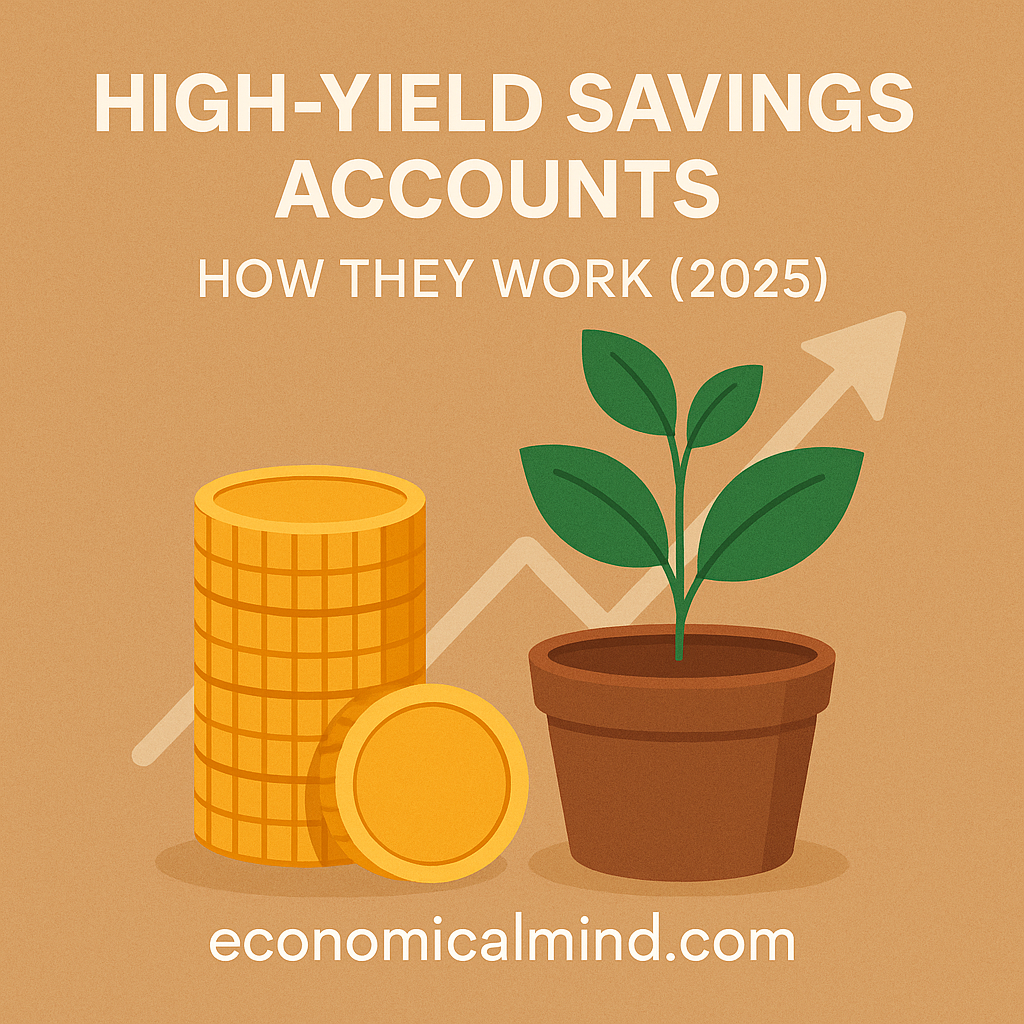
If you’ve noticed banks suddenly offering interest rates much higher than your old savings account, you’re seeing the rise of high-yield savings accounts (HYSAs) in action. These accounts are one of the simplest ways to make your money work harder without locking it away for years. Let’s explore how they function, what makes them different, and how to choose the right one in 2025.
What Is a High-Yield Savings Account?
A high-yield savings account is a bank or credit union account that pays a significantly higher annual percentage yield (APY) than traditional savings accounts. The difference can be huge—many standard accounts still pay less than 0.3% APY, while top online banks now offer 4.00% to 5.25% APY.
The key advantage: you earn more interest on your money without extra risk or long-term commitments. Funds remain FDIC- or NCUA-insured up to $250,000 per depositor, per institution.
Why Banks Offer Higher Rates
Most high-yield accounts are offered by online banks, which save money on overhead costs (no physical branches) and pass those savings to customers through higher interest rates. These institutions use competitive APYs to attract new deposits, especially in a higher-rate environment like 2025.
In short: fewer branches = lower costs = better yields for you.
How Interest Is Calculated
Interest on a HYSA is usually compounded daily and paid monthly. That means your interest earns interest faster than it would in older-style accounts.
For example:
- Deposit: $10,000
- APY: 5.00%
- Compounding: daily
After one year, you’d earn roughly $512 in interest—compared to only $30 from a 0.3% APY account.
Pros and Cons of High-Yield Savings Accounts
Pros
- Excellent interest rates with minimal risk
- Full liquidity — withdraw anytime
- FDIC/NCUA insurance
- Easy online account management
- Perfect for emergency funds or short-term savings goals
Cons
- Rates can fluctuate as the Fed changes policies
- Some banks limit transfers to 6 per month
- Inflation may still outpace returns over long periods
How to Choose the Best Account in 2025
When comparing high-yield savings accounts this year, consider:
- APY: Look for rates above 4.5% as of early 2025.
- Fees: Avoid accounts with maintenance or withdrawal fees.
- Accessibility: Check transfer times and mobile app quality.
- Minimum Balance: Some accounts require $1,000 or more to earn top APY.
- Reputation: Verify FDIC or NCUA insurance and customer reviews.
Top-rated options often include Ally Bank, Discover Bank, Marcus by Goldman Sachs, and American Express High Yield Savings, though rates and terms change frequently.
Smart Ways to Use a HYSA
- Keep your emergency fund easily accessible while earning interest.
- Save for short-term goals like vacations, weddings, or down payments.
- Store money temporarily between investments or debt payoffs.
- Use automatic transfers from your checking account to stay consistent.
Final Thoughts
A high-yield savings account isn’t an investment—it’s a safe, flexible tool for building short-term financial strength. With rates finally rewarding savers again, 2025 is the perfect year to review your accounts and move idle cash into one that truly earns.
